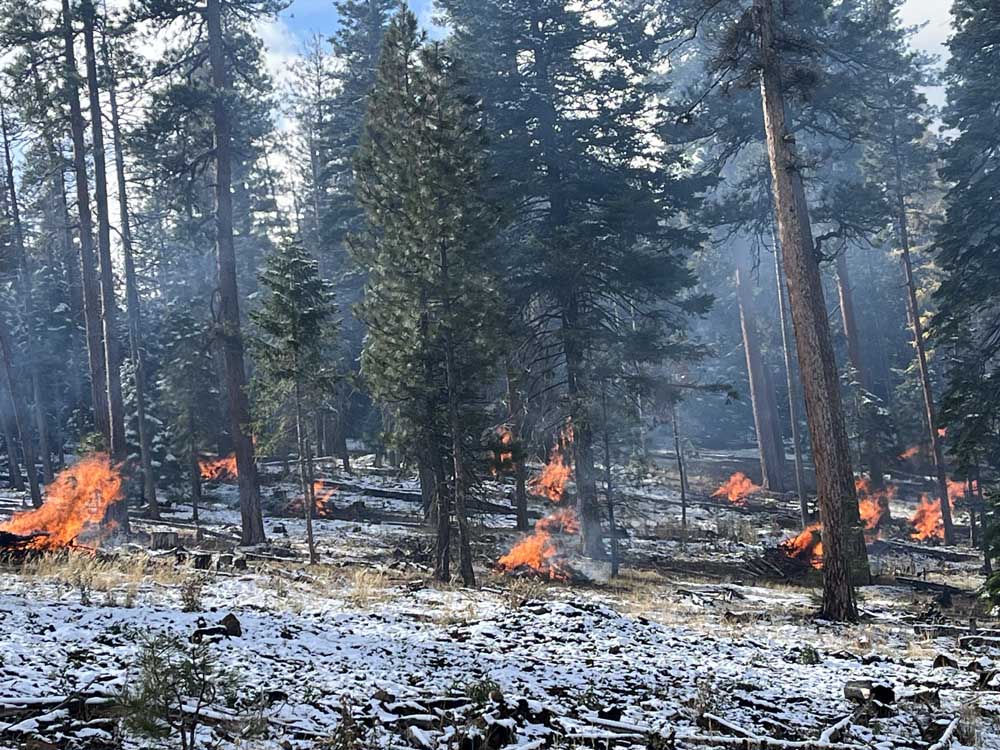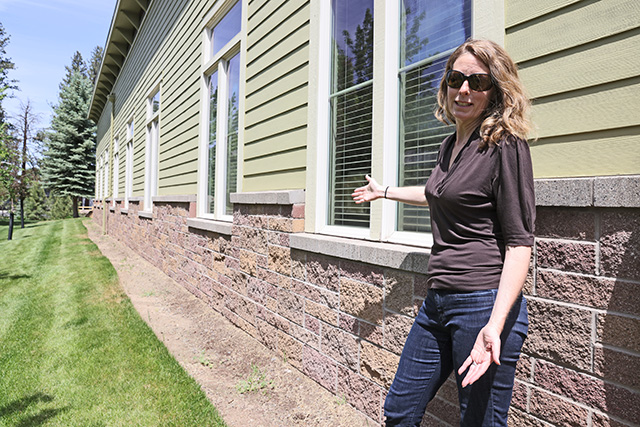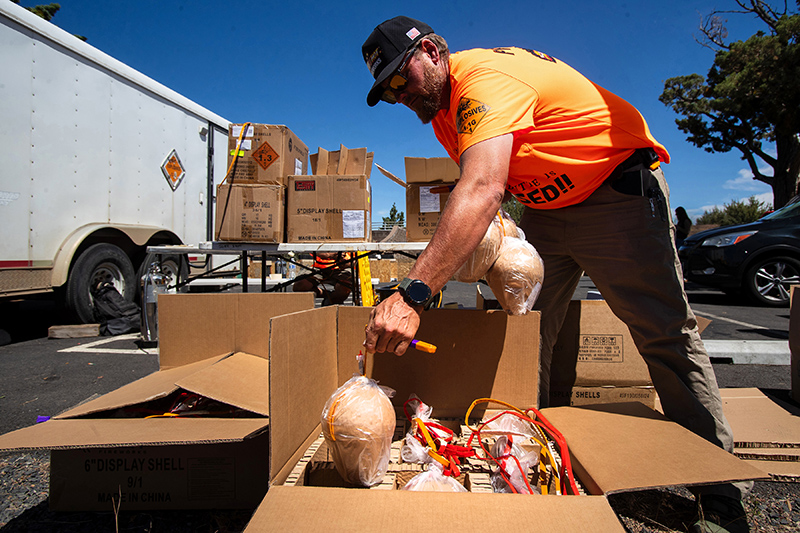Guest column: Resist greenwashing changes proposed for forest plan
Published 9:00 pm Wednesday, January 15, 2025

- Piles of vegetation burn near Big Summit Prairie in the Ochoco National Forest.
I read with great interest Sami Godlove’s December 19th piece in The Bulletin where he described the U.S. Forest Service’s planned amendment to the 1994 Northwest Forest Plan.
The forest plan was designed to protect old-growth forests from timber harvesting. This important objective is now in jeopardy. One of the four amendment options, Option A, will keep the existing protections. However, the Forest Service favors Option B. If “B” is approved, stands of trees in our moist forests as old at 120 years will no longer be protected with the opening of an additional 800,000+ acres to commercial logging. Protection will also be lifted on mixed matrix stands of our moist forests as well as one-third of dry forests on the east side of the Cascades — all to improve “forest health” and “fire resilience.” The reality is that commercial logging is a major reason our old growth forests on the east side now represent only 2-8% the original mature forest area. How has this been good for forest health? Does cutting down the forest save it?
Amendment Option B to the plan is just another example of greenwashing by the Forest Service and the timber industry by using Orwellian newspeak “designed to diminish the range of thought” by using deceptive language in the control of critical, independent thinking. The greenwashing term “ecological forestry” is a euphemism for clearcutting designed to confuse and obfuscate degradation by deforestation. Another newspeak forestry plan is “restoration” which is used to argue that thinning, prescribed burns, salvage logging, and forest mastication will return the forest to what it was like when indigenous people were stewards of the forest — a return to the original low-density configuration of the distant past. A myth is created to convince us that wildfire risk can be mitigated by “forest management” and “treatment,” both euphemisms for chainsaw medicine. Chainsaw restoration is forest degradation. Climate change has dramatically changed in ways that promote drought, tree-killing insect infestations, high winds, and unprecedented, low frequency, but high damaging megafires that burn through areas that were managed by thinning, prescribed burns and even clear-cuts.
The scientific literature refutes many of these claims. For example, a recent paper by Davis and colleagues in the peer-reviewed journal Forest Ecology and Management presented meta data showing that thinning by itself had no significant effect in reducing the risk of severe fire within a 10-year period post-treatment. Only prescribed burns had a mitigating but limiting effect. Thinning and other forest management practices have little or no impact on preventing the spread of large and fast-burning megafires such as the Bootleg, Dixie and Caldor fires of 2021.
The reader might ask what the value is of preserving mixed, old-growth, and mature forests. Besides the obvious attributes of preserving species diversity and providing recreational opportunities for Oregonians, there is one overarching value that should be considered — trees mitigate climate change. The forests of the Northwest are the lungs of North America. Photosynthesis captures the greenhouse gas CO2 and stores it in the wood of the tree. And large trees are the best at capturing greenhouse gases. In some of our dry forests where large trees account for only 3% of all trees, they still store 42% of the total above ground carbon. Trees sequester carbon at a faster rate as they mature because of the growing leaf area. In only one year, a single large tree can sequester the amount of carbon stored as biomass in an entire mid-sized tree. Moreover, logging emits ten times more carbon than a fire would in that same area.
In sum, resist greenwashing, study up on forestry issues, and become engaged. Attend the upcoming Feb 13th Forest Service meeting at the Sisters Fire Station at 301 S. Elm St., Sisters at 5:30 p.m. Write the Forest Service and tell it to maintain the current forest plan by choosing Amendment Option A by visiting the Forest Service planning page at fs.usda.gov/project/?project=64745. Encourage the Forest Service to conduct climate-smart forestry practices (e.g., variable density thinning, afforestation, longer timber harvest rotations, limiting the diameter of harvested trees, etc.) that allow timber harvesting with minimal impacts on climate change.
Do you have a point you’d like to make or an issue you feel strongly about? Submit a letter to the editor or a guest column.








